“Sky Fighters, February 1937″ by Eugene M. Frandzen
Eugene M. Frandzen painted the covers of Sky Fighters from its first issue in 1932 until he moved on from the pulps in 1939. At this point in the run, the covers were about the planes featured on the cover more than the story depicted. On the February 1937 cover, It’s the Pfalz D13 attacking a balloon!
The Ships on the Cover
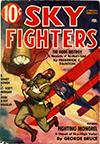 THE elongated type of captive balloons were of French origin but the Germans were the first to put them to practical use in the World War. They called them “drachens,†or kite balloons. They are flown in exactly the same way as a boy’s kite, the force of the wind holding them aloft. In the earlier spherical-shaped balloons the wind spun them and had a tendency to force them down.
THE elongated type of captive balloons were of French origin but the Germans were the first to put them to practical use in the World War. They called them “drachens,†or kite balloons. They are flown in exactly the same way as a boy’s kite, the force of the wind holding them aloft. In the earlier spherical-shaped balloons the wind spun them and had a tendency to force them down.
Theoretically any balloon was obsolete on account of the airplane, dirigible and anti-aircraft gun, but the big bags usually stayed up, did their work, were hawled down and tucked in for the night and sent aloft the next day to act as the eyes for our artillery.

Of course lots of balloons were eventually shot down, but so were airplanes and dirigibles. The number of balloons lost by the U.S. in action was forty-eight and our airmen flattened seventy-three of the Kaiser’s drachens.
A Poor Risk
To service one of these cumbersome bags took the combined muscle and brains of a considerable group of men; even motorcycle messengers, a furrier, shoemaker, tailor, barber, orderlies, etc., were necessary. Around the bag on the ground was spotted a ring of machine-guns and antiaircraft guns. That ring of shooting irons kept most airplanes away. When an ambitious airman did attack a balloon his greeting from the ground took on the aspect of a major attack. His chance of coming out of the scrap the victor and in one piece was so low that any insurance company would consider him a poor risk.
The Pfalz D 13 was one of the last ships put out by the German manufacturer of that name. Its design seems to have been influenced by the Bristol Fighter, one of Britain’s finest fighting ships. Both have the fuselage suspended between the upper and lower wings and the bracing from the fuselage to the lower wing and the undercarriage is very similar. This D 13 was a fast, maneuverable job with a powerful water-cooled motor to pull it. It had to be fast to hop an Allied balloon and down it.
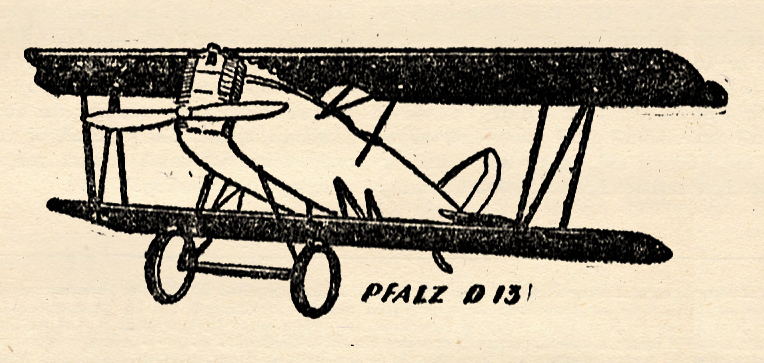
The pilot in the Pfalz was not just a prowler who happened to spot the balloon and look a long chance in attacking. That Pfalz in downing the balloon hoped to save his side a major calamity. The balloon observer has for days been up in his basket with his glasses glued to his eyes; his face to the east and his mouth close to the small telephone transmitter. His words have been actuating receiving diaphrams on the portable receiving station on the ground. Concise information has then been transmitted to battery commanders stationed behind their smoking heavy guns. Those guns have been sighted on enemy troops rushing up to reenforce Hun front line positions. In sighting the guns dozens of artillery officers have used only one pair of eyes, those keen, searching eyes of the balloon observers high in the air whose only life line is a steel cable hooked to a drum winch on the ground.
Stern Orders
Therefore to silence dozens of batteries tearing German troops to pieces it is necessary to blind the Allies lookout. The order the German pilot got was: “Do not come back unless you explode the balloon.” The Pfalz pilot dove on his quarry. Incendiary bullets from his Spandaus ripped into highly explosive hydrogen gas. Poof, the balloon is through! Out bails the observer. The Pfalz pilot yanks at his stick, there is no response from his elevators. Shrapnel from the ground batteries has made a sieve of his plane. All control wires are gone; so is the Pfalz and its pilot.
As the Pfalz tore head on into the ground a second reserve balloon slowly eased itself out of a fake group of trees. A figure disentangled itself from a jumble of ropes, sped toward the anchored basket of the new balloon. He tore away pieces of scorched clothing, leaped into the basket, yelled, “Up ship!†and was slithering up into sky again.
A battery commander miles distant saw the new balloon mounting. He smiled grimly, “I thought they had blinded us, but it was just a cinder in our eye.â€

Sky Fighters, February 1937 by Eugene M. Frandzen
(The Ships on The Cover Page)





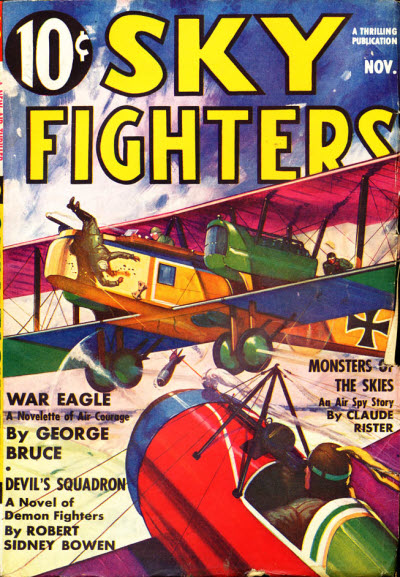 a story from the highly prolific George Bruce. Bruce, a former pilot, began writing in the 1920’s and became noted for his aerial war stories—several publications even bore his name. In the 1930’s and ’40’s he transitioned into screenwriting for Hollywood action films and then into tv in the 1950’s and ’60’s.
a story from the highly prolific George Bruce. Bruce, a former pilot, began writing in the 1920’s and became noted for his aerial war stories—several publications even bore his name. In the 1930’s and ’40’s he transitioned into screenwriting for Hollywood action films and then into tv in the 1950’s and ’60’s.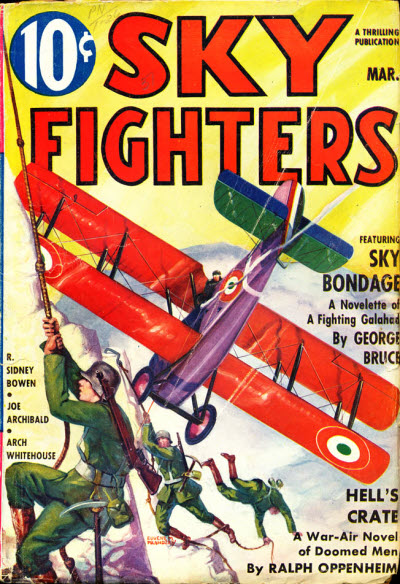 a short, but gripping tale from the prolific pen of
a short, but gripping tale from the prolific pen of 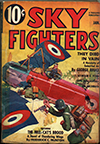
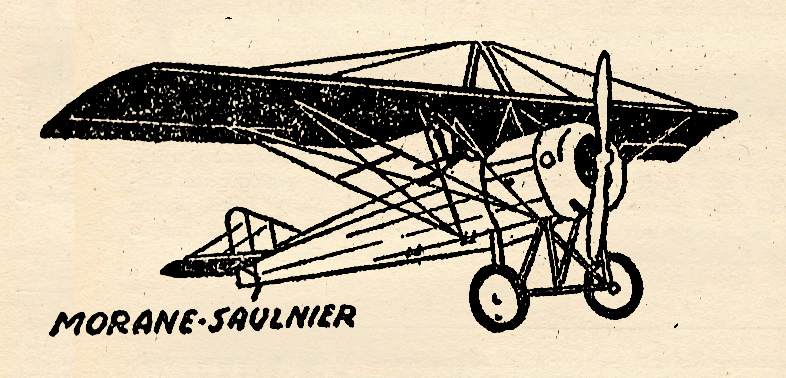
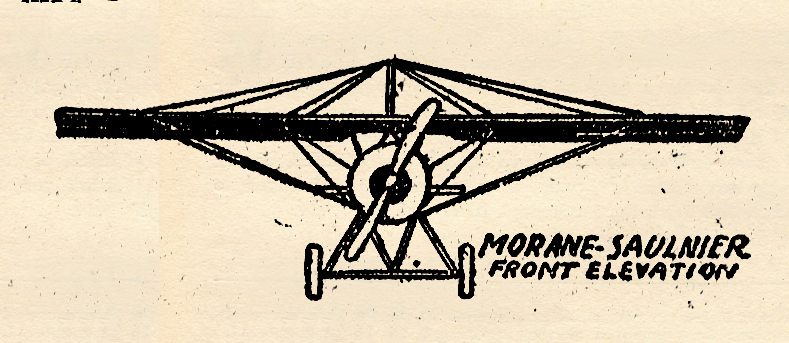
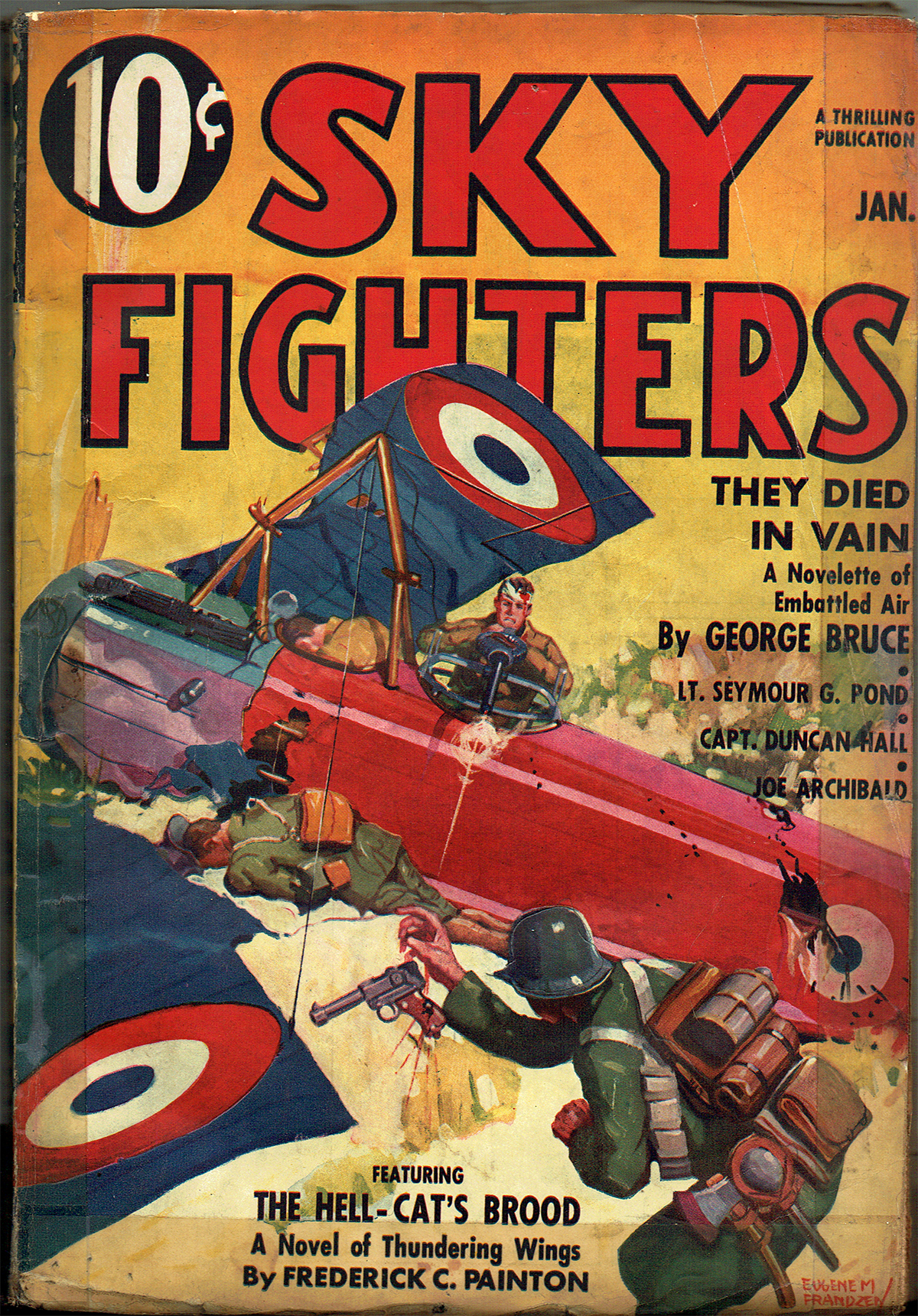
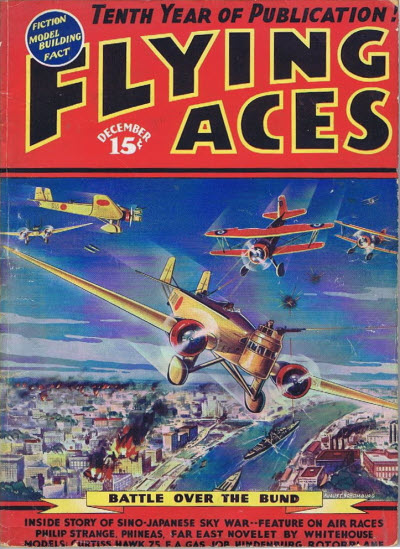 That sound can only mean one thing—that Bachelor of Artifice, Knight of Calamity and an alumnus of Doctor Merlin’s Camelot College for Conjurors is back to vex not only the Germans, but the Americans—the Ninth Pursuit Squadron in particular—as well. Yes it’s the marvel from Boonetown, Iowa himself—Lieutenant Phineas Pinkham!
That sound can only mean one thing—that Bachelor of Artifice, Knight of Calamity and an alumnus of Doctor Merlin’s Camelot College for Conjurors is back to vex not only the Germans, but the Americans—the Ninth Pursuit Squadron in particular—as well. Yes it’s the marvel from Boonetown, Iowa himself—Lieutenant Phineas Pinkham! 

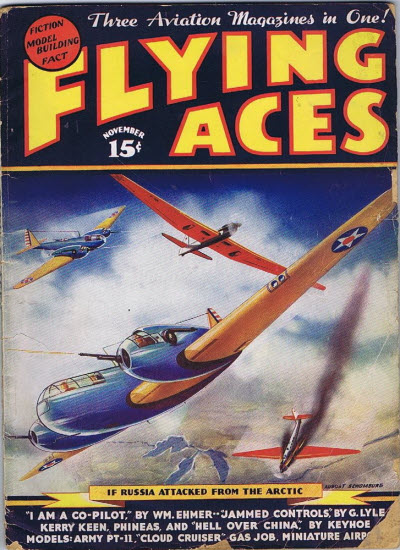 That sound can only mean one thing—that Bachelor of Artifice, Knight of Calamity and an alumnus of Doctor Merlin’s Camelot College for Conjurors is back to vex not only the Germans, but the Americans—the Ninth Pursuit Squadron in particular—as well. Yes it’s the marvel from Boonetown, Iowa himself—Lieutenant Phineas Pinkham!
That sound can only mean one thing—that Bachelor of Artifice, Knight of Calamity and an alumnus of Doctor Merlin’s Camelot College for Conjurors is back to vex not only the Germans, but the Americans—the Ninth Pursuit Squadron in particular—as well. Yes it’s the marvel from Boonetown, Iowa himself—Lieutenant Phineas Pinkham! 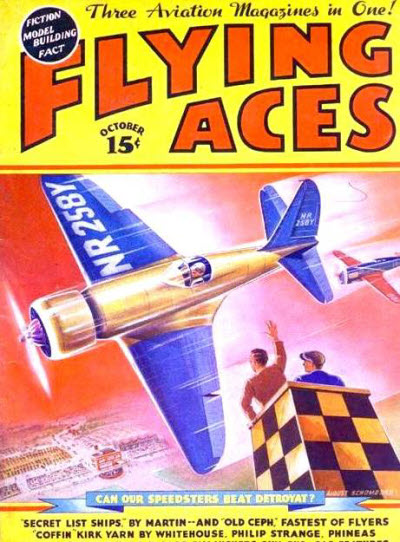 That sound can only mean one thing—that Bachelor of Artifice, Knight of Calamity and an alumnus of Doctor Merlin’s Camelot College for Conjurors is back to vex not only the Germans, but the Americans—the Ninth Pursuit Squadron in particular—as well. Yes it’s the marvel from Boonetown, Iowa himself—Lieutenant Phineas Pinkham!
That sound can only mean one thing—that Bachelor of Artifice, Knight of Calamity and an alumnus of Doctor Merlin’s Camelot College for Conjurors is back to vex not only the Germans, but the Americans—the Ninth Pursuit Squadron in particular—as well. Yes it’s the marvel from Boonetown, Iowa himself—Lieutenant Phineas Pinkham! 




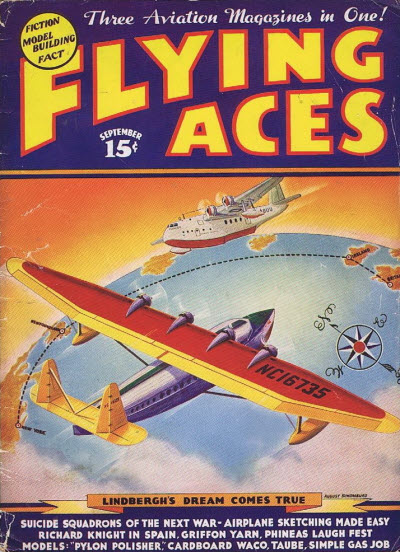 That sound can only mean one thing—it’s time to ring out the old year and ring in the new with that Bachelor of Artifice, Knight of Calamity and an alumnus of Doctor Merlin’s Camelot College for Conjurors—Phineas Pinkham. From the pages of the September 1937 Flying Aces, it’s another sky-high “Phineas Pinkham” mirthquake from the Joe Archibald—It’s “Peck’s Spad Boys!”
That sound can only mean one thing—it’s time to ring out the old year and ring in the new with that Bachelor of Artifice, Knight of Calamity and an alumnus of Doctor Merlin’s Camelot College for Conjurors—Phineas Pinkham. From the pages of the September 1937 Flying Aces, it’s another sky-high “Phineas Pinkham” mirthquake from the Joe Archibald—It’s “Peck’s Spad Boys!”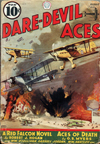
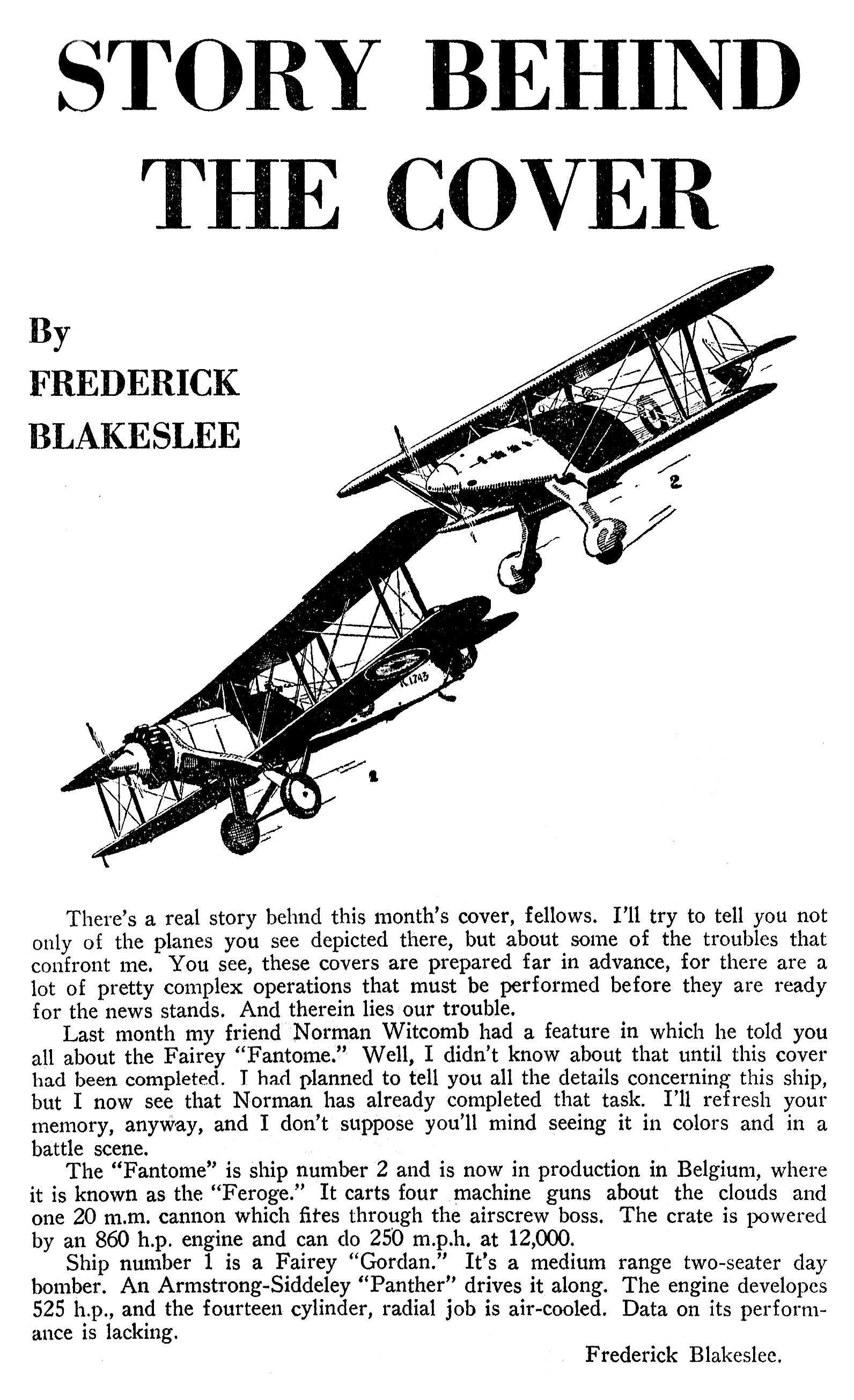
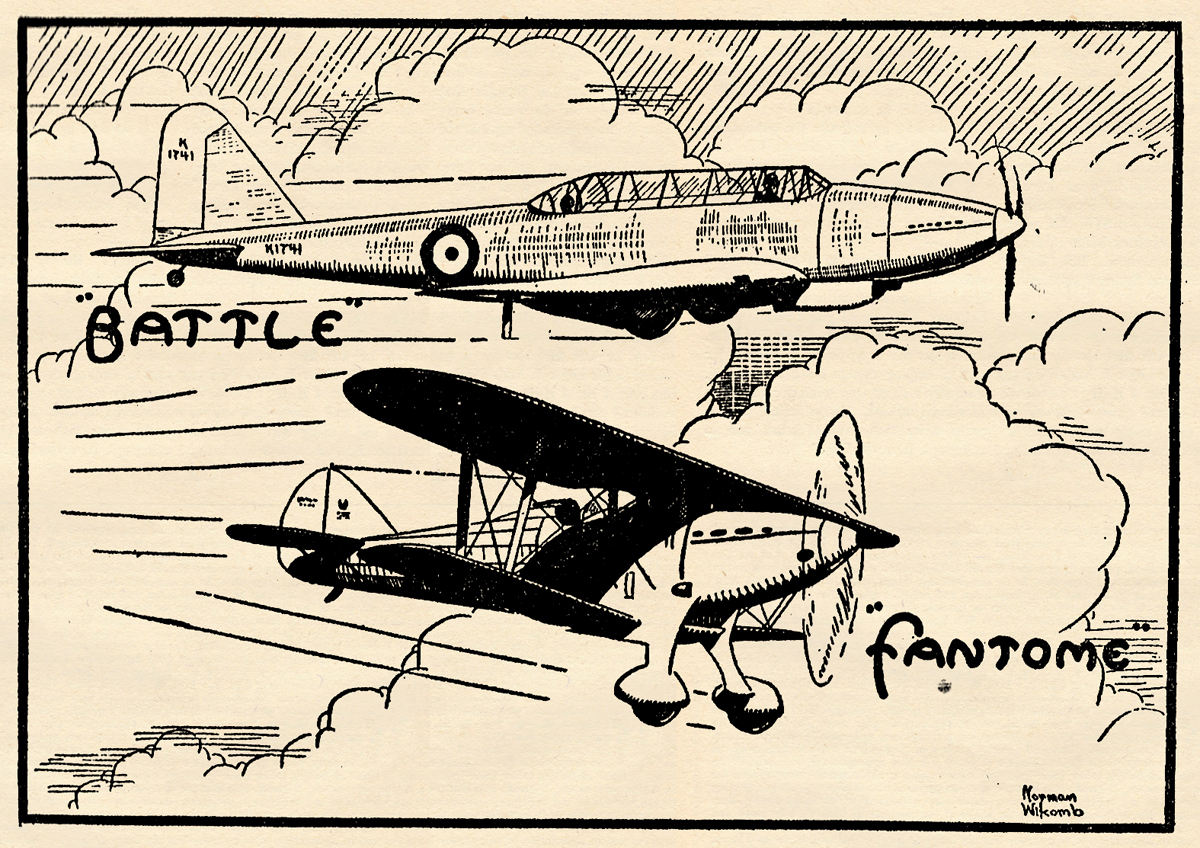


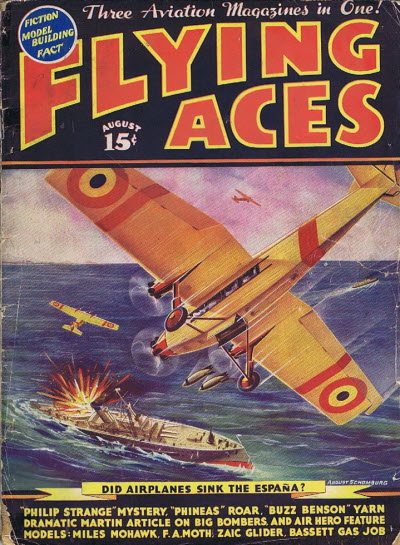 That sound can only mean one thing—that Bachelor of Artifice, Knight of Calamity and an alumnus of Doctor Merlin’s Camelot College for Conjurors is back to vex not only the Germans, but the Americans—the Ninth Pursuit Squadron in particular—as well. Yes it’s the marvel from Boonetown, Iowa himself—Lieutenant Phineas Pinkham!
That sound can only mean one thing—that Bachelor of Artifice, Knight of Calamity and an alumnus of Doctor Merlin’s Camelot College for Conjurors is back to vex not only the Germans, but the Americans—the Ninth Pursuit Squadron in particular—as well. Yes it’s the marvel from Boonetown, Iowa himself—Lieutenant Phineas Pinkham! 
